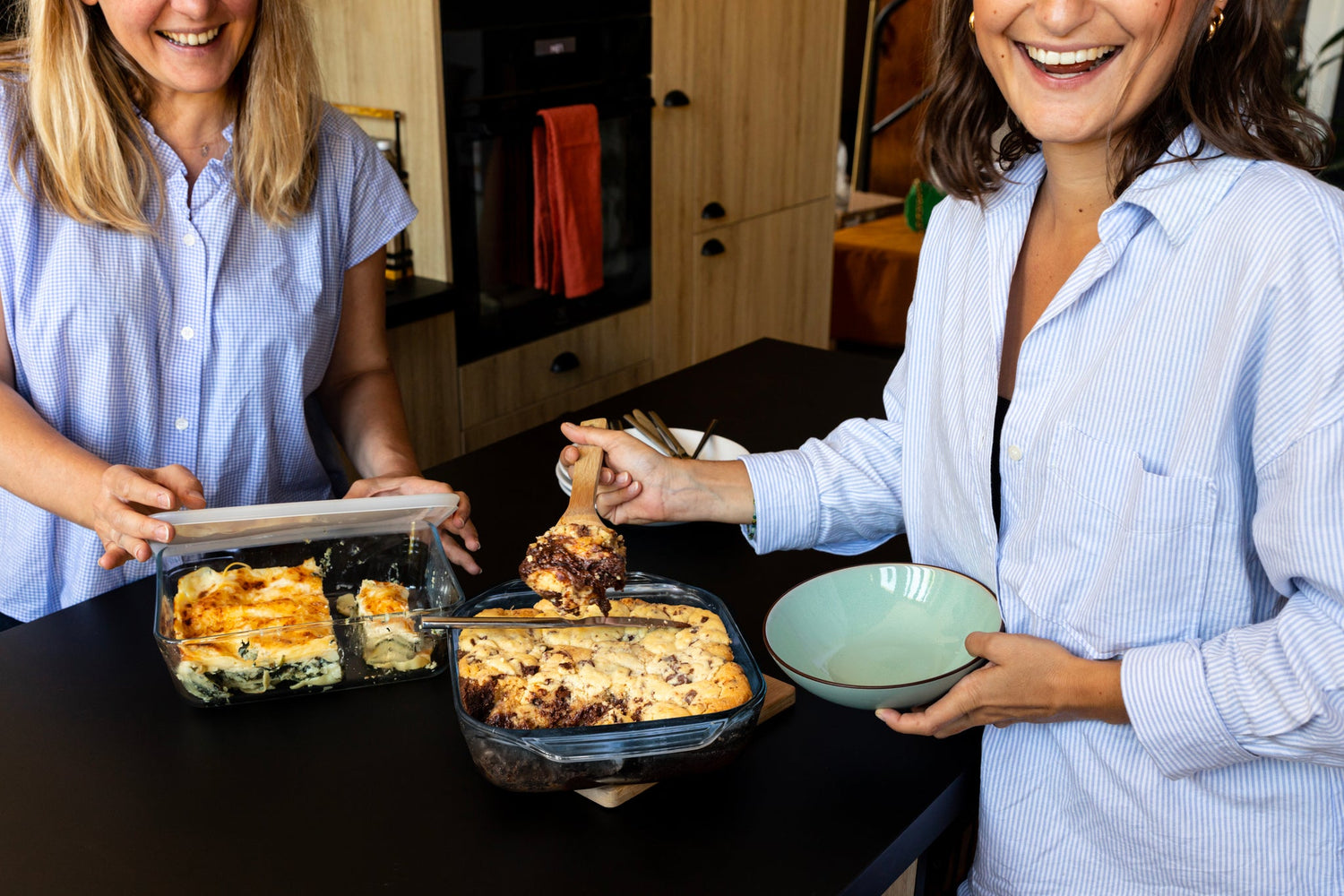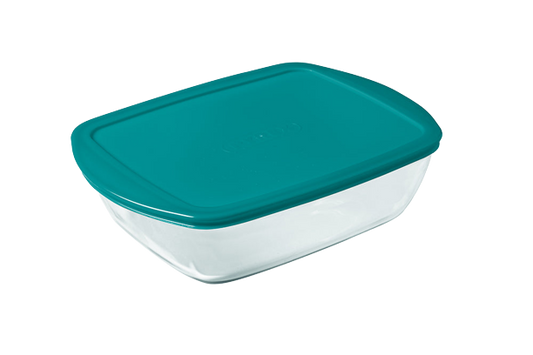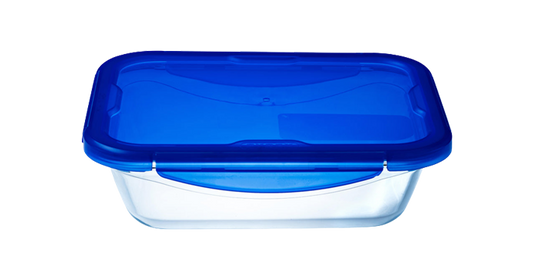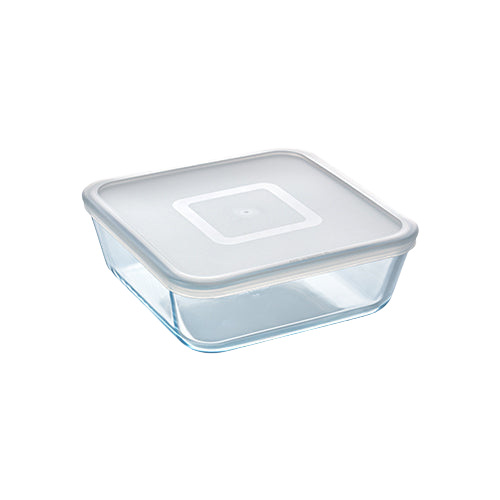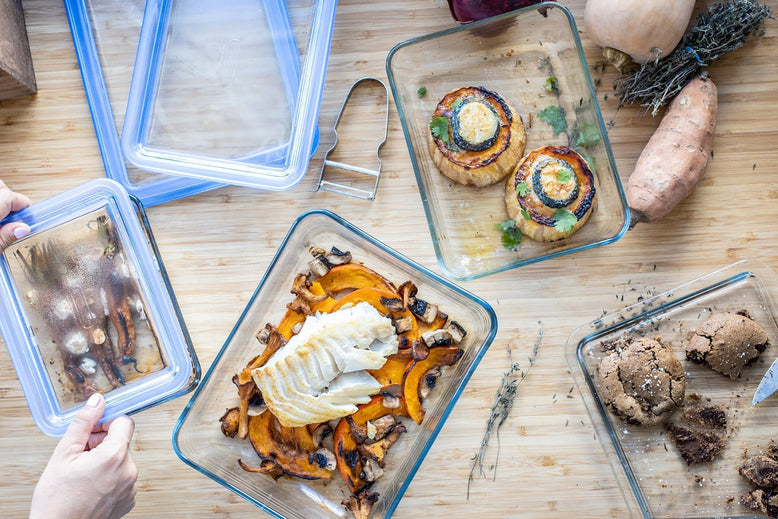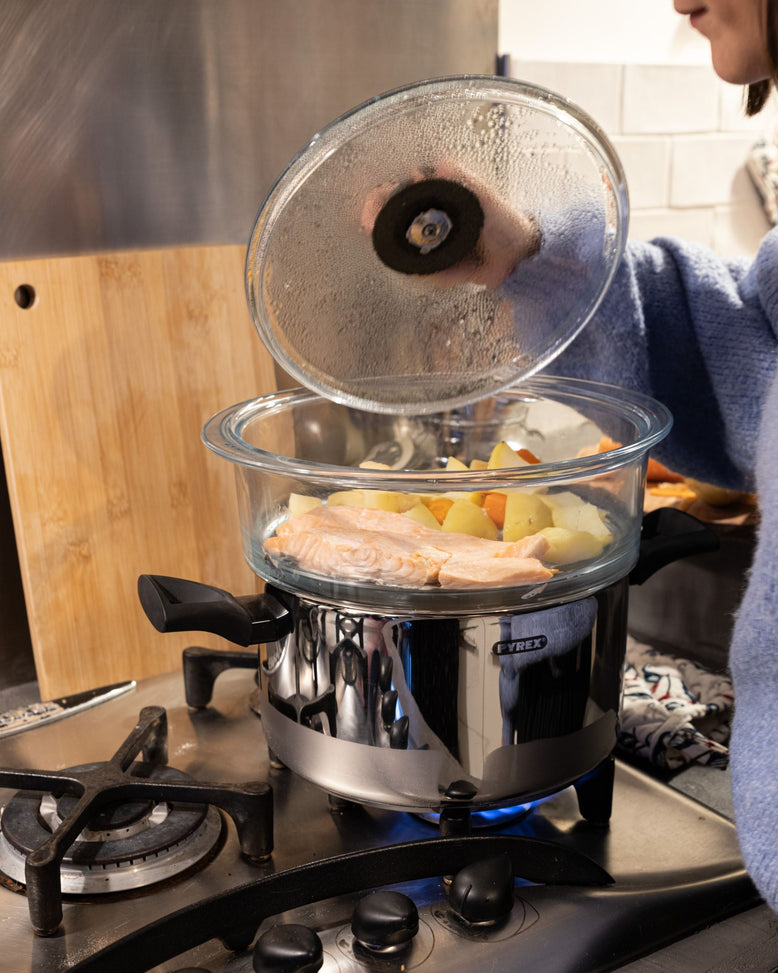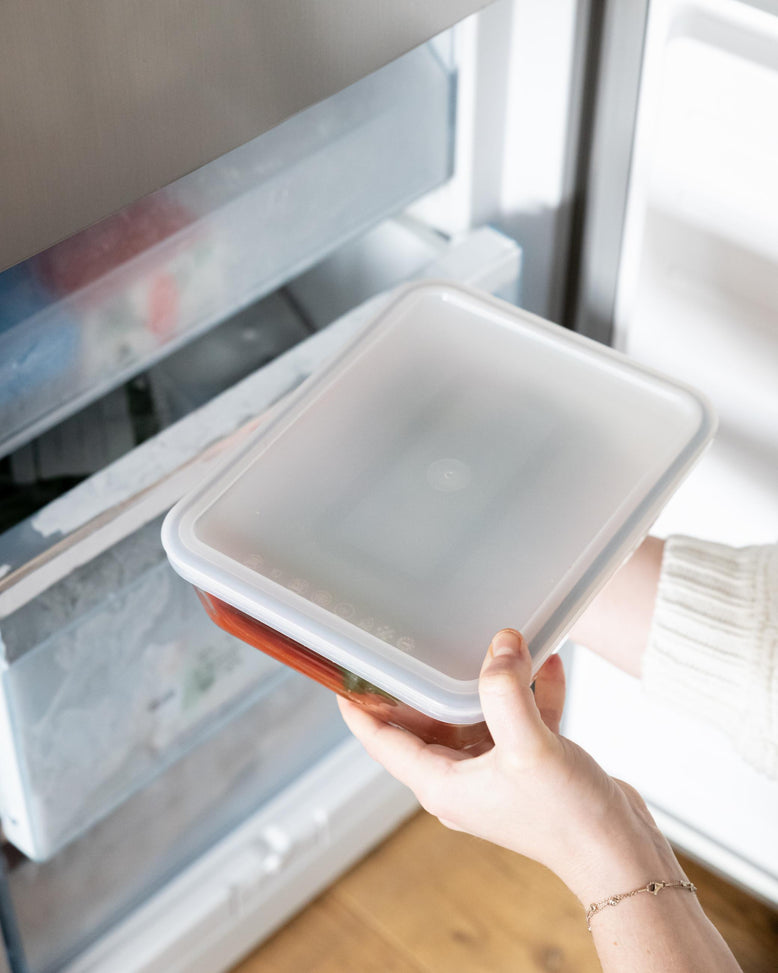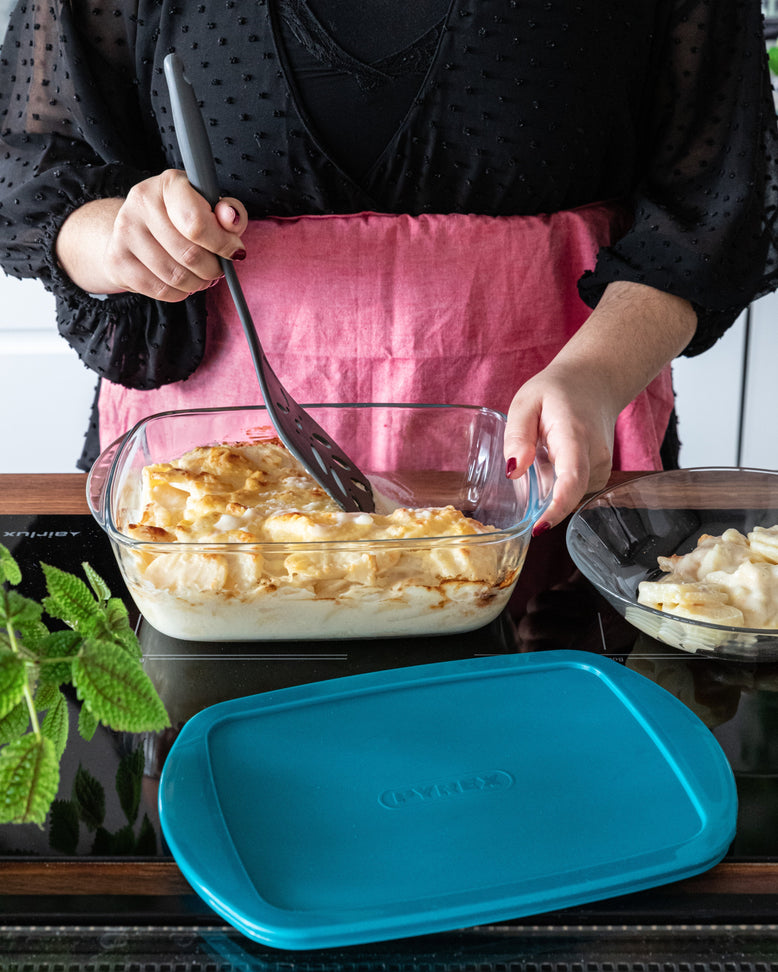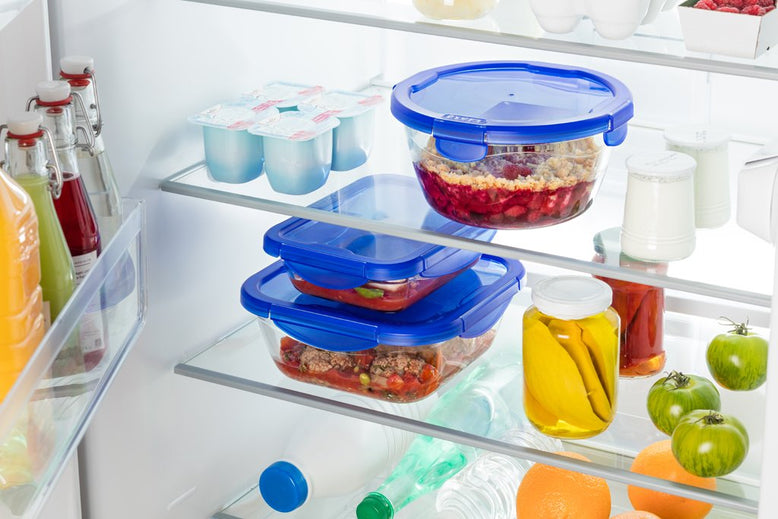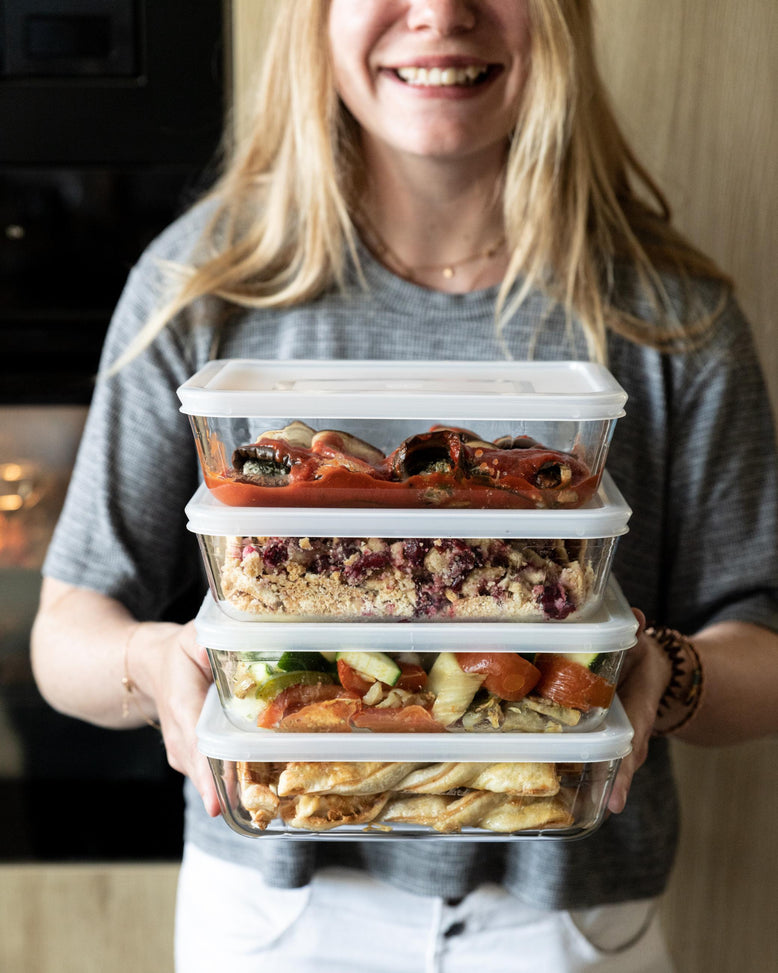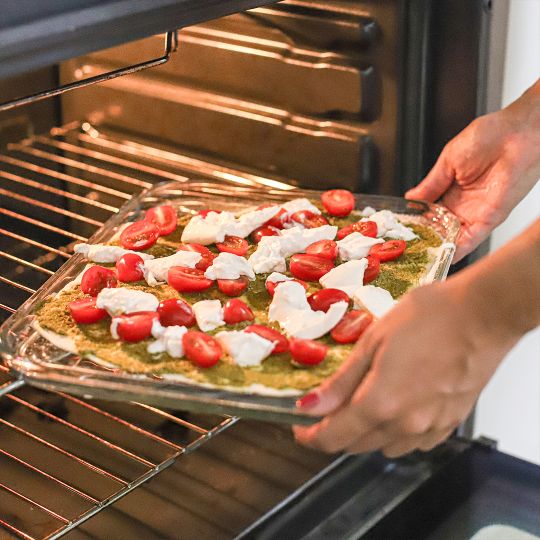How to organise your refrigerator: cold zones, food preservation and good practices
The refrigerator is often the poor relation of the kitchen. And yet, it is essential to clean it regularly and to store food according to cold zones for better preservation. If you are lost when it comes to organising your fridge, follow the guide: we tell you everything about food storage containers, maintenance, and the different storage steps to follow.
Why is it important to organise your fridge properly?
Quite simply for hygiene reasons, but not only that. A well-organised fridge is a refrigerator that consumes less electricity and allows you to consume your food safely while limiting food waste.
Limit food waste
By knowing the food present in your refrigerator, you automatically reduce waste, since you will then choose to consume the oldest first. For this, check the use-by dates and do not store vegetables unnecessarily too far in advance to avoid seeing them spoil in your fridge. Also choose the appropriate storage zones for food, they will keep much better.
A very practical reminder: manage your fridge like stock with the FIFO method: First In, First Out, in other words, first in, first out! To limit your food waste, choose to cook the oldest products first.
► Good to know: did you know that France generated, in 2022, 9.4 million tonnes of food waste, of which 42% came from household food waste? And it gets worse! Food waste is made up of 43% edible waste which corresponds to food wasted. If we take our calculator, this represents, out of the 9.4 million tonnes of waste, no less than 1.67 million tonnes of edible waste.
Extend the shelf life of food
By having a tidy fridge with, in particular, glass food storage containers to preserve food, you will be able to extend the preservation of your food.
Tips from the Pyrex® brand:
-
remove cardboard packaging which adds humidity in your fridge;
-
replace it with suitable packaging such as a glass storage box;
-
do not overfill your freezer to allow air to circulate for better preservation;
-
respect the cold zones.
5 tips to prevent cross-contamination
Cross-contamination corresponds to the transfer of bacteria within the refrigerator which end up on other foods and can lead to food poisoning.
-
Tip 1: the first precaution is never to leave food that is already cooked without protection: a lid or suitable storage container must always be used.
-
Tip 2: do not mix foods that have nothing to do with each other: meat on one side, vegetables on the other.
-
Tip 3: remove packaging before putting it in the fridge, because air circulation will limit contamination of the fridge.
-
Tip 4: clean your refrigerator at least once a month and immediately remove any spilled liquid or food.
-
Tip 5: check that the door closes properly for good preservation of food (and also to limit electricity consumption!).
Steps to organise a fridge efficiently
Understand the distribution of cold zones
Refrigerators with ventilated or stirred cold systems diffuse a uniform temperature in the fridge. They therefore make it unnecessary to arrange your food by cold zone. But if you are not sure of your refrigerator’s functioning, here is how to find the distribution zones:
A fridge has 4 cold zones, which are:
-
the inside of the fridge door, which is between 6 and 8 °C;
-
the tempered zone between 8 and 10 °C, which is generally the vegetable drawer;
-
the fresh zone between 4 and 6 °C, which consists of the two upper thirds;
-
the cold zone between 0 and 3 °C located at the bottom.
Some refrigerators are equipped with a freezer compartment which is a closed compartment where ice cubes are found and which has a temperature oscillating between -6 °C and -12 °C. It is possible to place food to freeze (and not deep-freeze) there for preservation from a few days to a maximum of one month.
Where to store each type of food in the fridge
Between meat and fish, dairy products, fruit and vegetables, leftovers and cooked dishes, it is not always easy to find your way. Here is a summary table by storage zone and foods to understand how to organise your fridge.
|
Refrigerator zone |
Food to preserve |
|
Cold zone between 0 and 3 °C |
Raw meat and fish, shellfish, raw milk, prepared dishes, opened fresh products, egg-based preparations, including homemade chocolate mousse and mayonnaise, cold cuts. |
|
Fresh zone between 4 and 6 °C |
Cooked meat and fish, cooked vegetables, yoghurts and dairy products, creams, crème fraîche, fresh pasta – all packed in suitable containers. |
|
Fridge door between 6 and 8 °C |
Jam, butter, margarine, eggs, mustard, bottles of milk, fruit juices always well closed. |
|
Tempered zone between 8 and 10 °C |
Fresh vegetables |
Tips for optimising space in the fridge
-
Choose airtight boxes for storing your food, especially if you are into meal prep (see our guide on batch cooking to find out more);
-
Organise your fridge according to expiry dates: newly purchased yoghurts go to the back of the fridge and the oldest in front.
Mistakes to avoid when organising the refrigerator
Never overload the refrigerator
A fridge that is too full does not allow air to circulate freely. This results in unventilated parts and therefore food not cooled properly.
Never put hot food directly into the fridge
Apart from the risk of breaking the glass shelf of the fridge, you will automatically warm up the interior and therefore compromise proper preservation of food.
Mixing raw and cooked food
This is the best way to contaminate foods with each other. This is where choosing the right storage boxes is crucial. You will thus be able to preserve all your food without fear. Always remember to close your containers properly with a lid.
Good practices for maintaining your fridge
-
clean your refrigerator regularly and immediately in case of incident;
-
check the temperature with a fridge thermometer;
-
check the seals and the correct functioning of the thermostat.
FAQ: your questions about fridge organisation
What is the ideal temperature for a fridge?
It is recommended to set the temperature of a refrigerator between 4 and 6 °C depending on the outside temperature. Managed by the thermostat, the temperature will automatically be distributed in the different zones of the refrigerator: the door, the tempered zone, the fresh zone and the cold zone.
How often should you clean your fridge?
A complete cleaning once a month is recommended, not forgetting the seals and the vegetable drawer. Use a mild detergent or a special fridge disinfectant to ensure good hygiene.
Can everything be stored in the vegetable drawer?
The vegetable drawer is intended for storing… vegetables. It is therefore not recommended to store other foods there to avoid possible cross-contamination.
Which foods should not be stored in the refrigerator?
We tend to store everything in the fridge. Be aware that eggs and tomatoes, aubergines, courgettes and squashes as well as melon and watermelon do not like the fridge. Stone fruits also, as well as avocados and chocolate which will automatically turn white and lose flavour. Potatoes and sweet potatoes have no place in the fridge, just like pickles, garlic, onion, shallot and basil.

